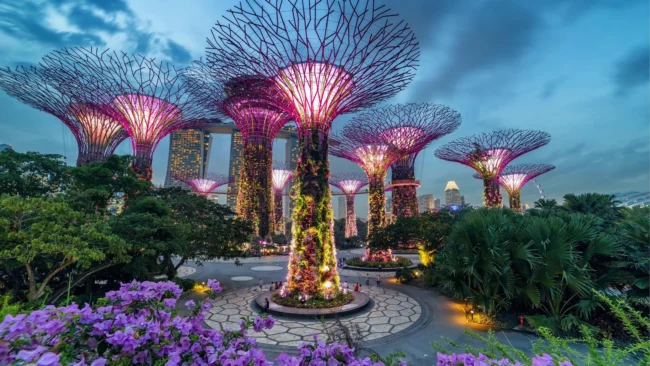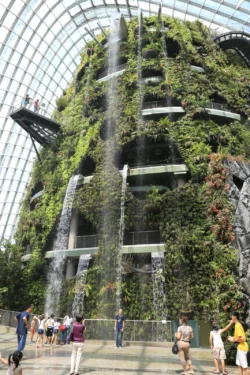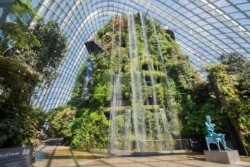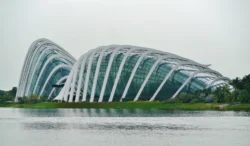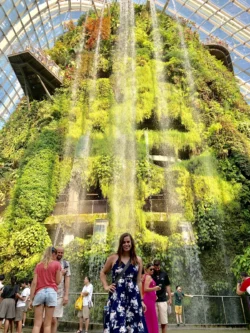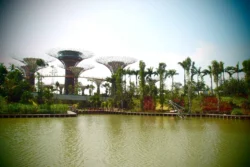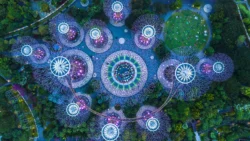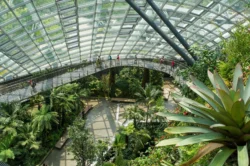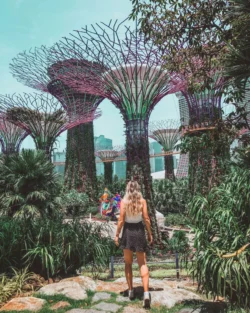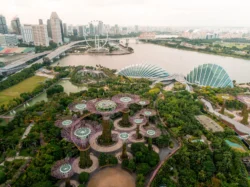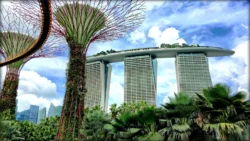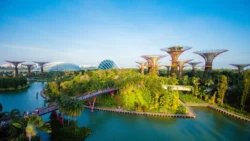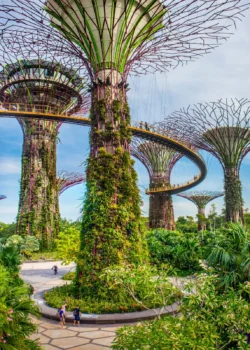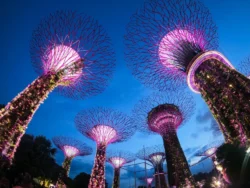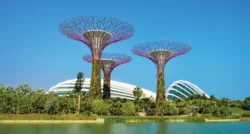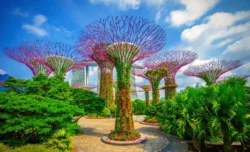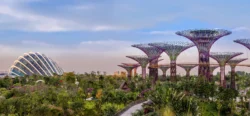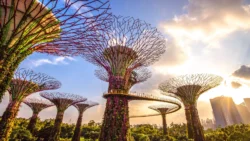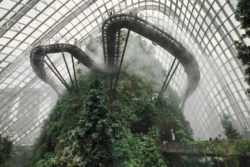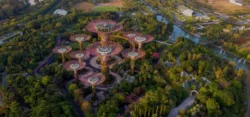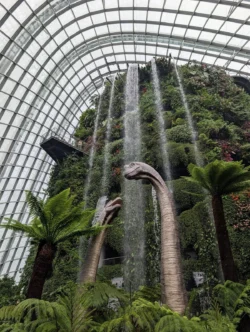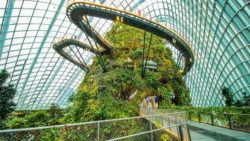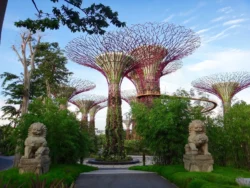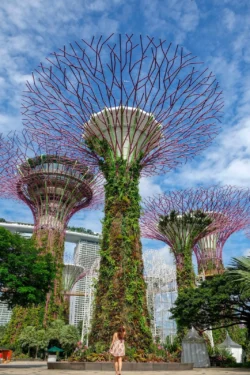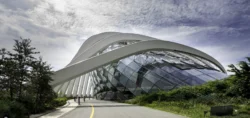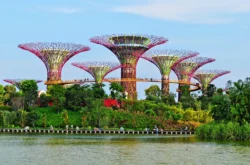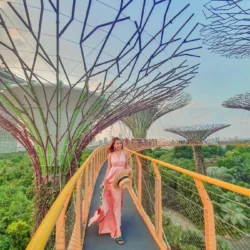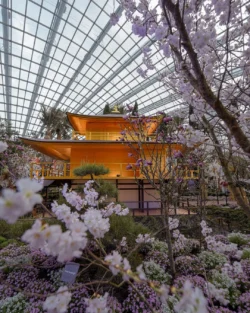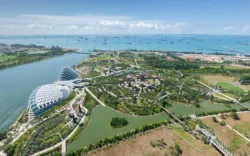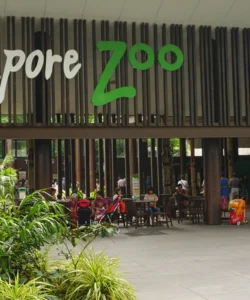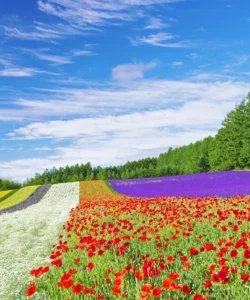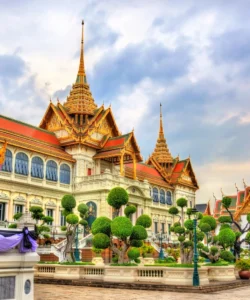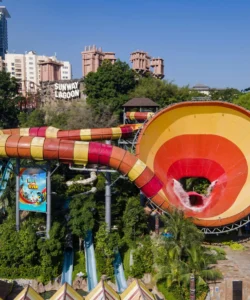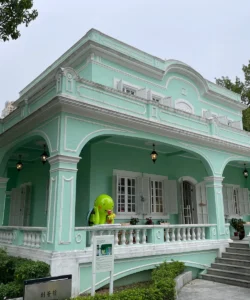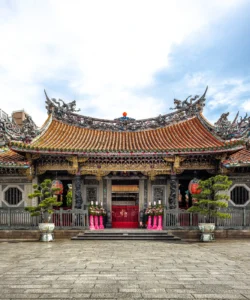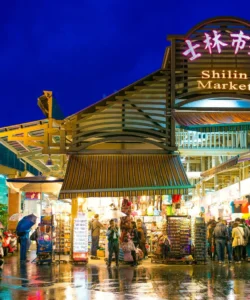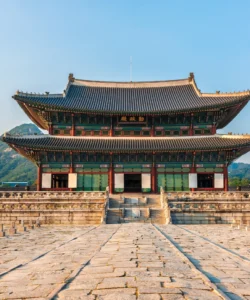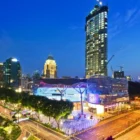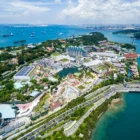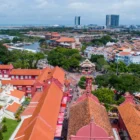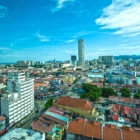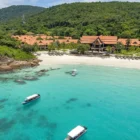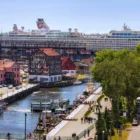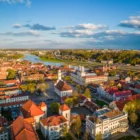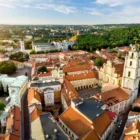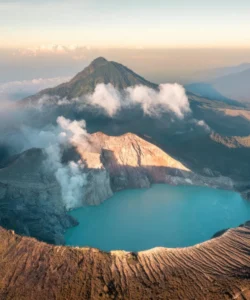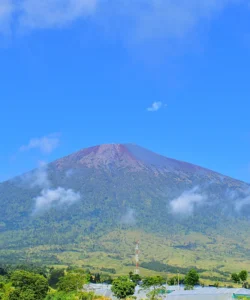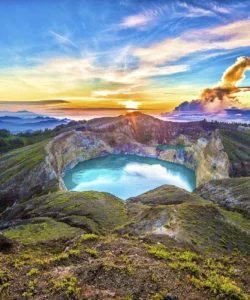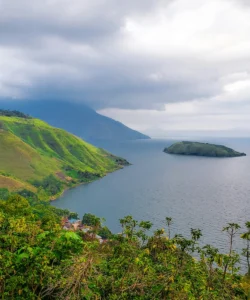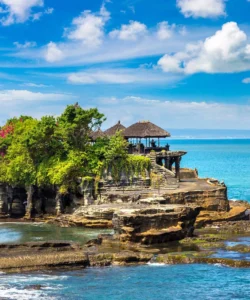Gardens by the Bay is a breathtaking, futuristic, and award-winning horticultural attraction that embodies Singapore’s vision of being a “City in a Garden.” It’s a testament to innovation, sustainability, and stunning landscape architecture, attracting millions of visitors each year.
Name: Gardens by the Bay
Address: 18 Marina Gardens Drive, Singapore 018953.
It is prominently located in the Marina Bay area, adjacent to the iconic Marina Bay Sands and the Singapore Flyer, forming a central part of Singapore’s urban waterfront landscape.
How to Get There:
Gardens by the Bay is exceptionally well-connected by Singapore’s efficient public transport system:
- By MRT (Mass Rapid Transit):
- Bayfront MRT Station (CE1/DT16): This is the most direct and recommended option. Take Exit B and follow the underground linkway, then cross either the Dragonfly Bridge or Meadow Bridge directly into the Gardens.
- Gardens by the Bay MRT Station (TE22): This station on the Thomson-East Coast Line offers direct access to the Gardens, near Satay by the Bay.
- Tanjong Pagar MRT Station (EW15): A less direct option. Take Exit C, then walk to International Plaza (Anson Road bus stop 03223) and take bus 400, alighting at Marina Gardens Drive (bus stop 03371).
- By Bus: Bus 400 directly serves Marina Gardens Drive.
- By Car/Taxi/Ride-Sharing (Grab, Gojek, Tada): Easily accessible by car, with multiple paid car parks available at Bayfront Plaza, Main Entrance (Basement Car Park), The Meadow, Bay East Garden, and Satay by the Bay.
- Walking: It’s a pleasant walk from Marina Bay Sands (via the overhead bridge, Garden Bay Bridge) or from the Helix Bridge/ArtScience Museum area, offering scenic views along the waterfront.
Landscape and Architecture:
Gardens by the Bay is a stunning fusion of nature and cutting-edge design, transforming reclaimed land into a verdant paradise.
- The Supertrees: These are the most iconic and recognizable features. There are 18 Supertrees, towering structures ranging from 25 to 50 meters (82 to 164 feet) in height, designed as vertical gardens. They are covered with a vibrant array of epiphytes (orchids, ferns, bromeliads) and serve multiple functions: 11 of them have solar photovoltaic cells to harvest solar energy, and one acts as an air exhaust for the conservatories. At night, they come alive with the mesmerizing Garden Rhapsody light and sound show.
- Cooled Conservatories: Two colossal, climate-controlled glass domes are central to the Gardens:
- Flower Dome: The world’s largest glass greenhouse (Guinness World Record 2015), it replicates the cool, dry climate of Mediterranean and semi-arid subtropical regions. It features diverse plant collections from five continents, including ancient olive trees, baobabs, and ever-changing seasonal floral displays.
- Cloud Forest: This misty conservatory replicates the cool, moist conditions of tropical montane (cloud) forests, found at high altitudes. It’s built around a 35-meter (115-foot) artificial mountain with the world’s tallest indoor waterfall cascading down its face. Visitors can explore various levels via aerial walkways, discovering rare plants and orchids.
- OCBC Skyway: A 128-meter (420-foot) long aerial walkway suspended 22 meters (72 feet) between two of the Supertrees. It offers a unique “walk among the giants” experience and panoramic views of the Gardens and the Marina Bay skyline.
- Floral Fantasy: A more recent addition, this attraction showcases artistic floral arrangements, suspended bouquets, and a rainforest oasis, including a vivarium for poison dart frogs, and a 4D ride simulating a dragonfly’s flight.
- Outdoor Gardens: Beyond the paid attractions, vast areas of the park are free to explore, including:
- Heritage Gardens: Thematic gardens reflecting Singapore’s diverse cultures and colonial past through plants.
- World of Plants: Educational gardens showcasing different plant types and ecosystems.
- Dragonfly & Kingfisher Lakes: Features aquatic plants and wildlife.
- Children’s Garden: A large, interactive playground with water play areas.
- The Canyon: Features a collection of sculptural rocks.
- Sustainable Design: The entire park is designed with sustainability at its core, incorporating passive cooling, rainwater harvesting, and biomass energy generation (from horticultural waste to cool the conservatories).
What Makes It Famous:
- Iconic Symbol of Singapore: Along with Marina Bay Sands and the Singapore Flyer, Gardens by the Bay has become an unmistakable and internationally recognized symbol of modern Singapore, representing its commitment to environmental sustainability and innovative urban development.
- Futuristic Design and Engineering: The unique, imaginative design of the Supertrees and the groundbreaking engineering of the cooled conservatories (Flower Dome, Cloud Forest) are widely acclaimed and make it a marvel of modern landscape architecture and environmental technology.
- Exceptional Biodiversity and Horticultural Excellence: It houses an astonishing collection of plant species from around the world, showcasing diverse ecosystems within its climate-controlled environments and outdoor gardens. It’s a global leader in horticultural display and conservation.
- Garden Rhapsody Light and Sound Show: The nightly light and music spectacle at the Supertree Grove is a major draw, captivating audiences with its choreographed lights dancing to musical scores.
- “City in a Garden” Vision: Gardens by the Bay is a cornerstone of Singapore’s national strategy to transform into a “City in a Garden,” making it a living example of how greenery can be integrated into a high-density urban landscape.
- World Records: It holds the Guinness World Record for the World’s Largest Glass Greenhouse (Flower Dome) and features the world’s tallest indoor waterfall (Cloud Forest), further solidifying its global renown.
Differences from Some Other Wonders:
- Reclaimed Land Transformation: Unlike natural wonders, Gardens by the Bay is built entirely on reclaimed land, a monumental achievement in land engineering and urban planning, showcasing how former sea can be transformed into a vibrant ecosystem.
- Man-Made Ecosystems: While it celebrates nature, a significant portion of its “natural” environment, particularly the conservatories, is man-made and meticulously climate-controlled. This allows for the cultivation of plants from diverse climates that would not naturally thrive in tropical Singapore.
- Integration of Technology and Nature: Gardens by the Bay uniquely blends cutting-edge technology (solar power, passive cooling, bio-mass energy) directly into its naturalistic features (the Supertrees, conservatories) to create a sustainable and visually spectacular experience. It’s a seamless integration of “green tech.”
- Architectural Art as Gardens: The Supertrees themselves are not just supports for plants but are architectural sculptures and vertical gardens, serving both aesthetic and functional purposes, making them distinct from conventional trellises or garden structures.
- Interactive and Immersive Educational Experience: While other parks might have gardens, Gardens by the Bay offers highly curated and immersive experiences within its domes (e.g., Cloud Forest’s misty environment, Flower Dome’s rotating floral displays) designed to educate visitors about different biomes and the importance of plant life and climate change.
- Dynamic and Ever-Changing Displays: The Flower Dome, in particular, is famous for its constantly changing seasonal floral displays, ensuring that repeat visitors always encounter something new and vibrant. This active curation is a key differentiator from static natural or historical sites.
